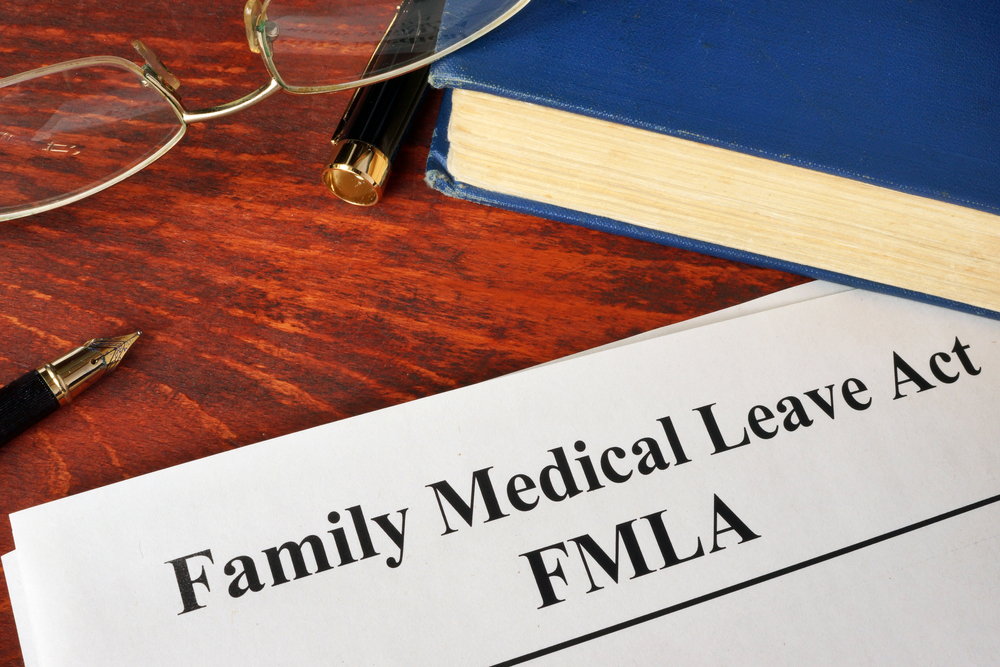On May 8, by a vote of 34 to 33, the Minnesota Senate adopted the Minnesota House of Representatives’ version of the Paid Family Medical Leave Act. The Governor has stated that he will sign the bill into law. The program will be funded by a payroll tax and run by the Minnesota Department of Employment and Economic Development (DEED) in a manner similar to the current unemployment compensation program.
Eligible employees will be entitled to up to 12 weeks of paid leave for their own serious health condition, their own pre-natal care, for bonding leave with their new child, to care for a family member with a serious health condition or who is an ill or injured servicemember, or for safety leave. If a need arises for an employee to take time off for the employee’s own serious health condition and to care for a family member, the total annual leave eligibility will be 18 weeks.
The program will initially be funded by an estimated $668 million from the state surplus and a general fund base of $3 million per year thereafter. The law goes into effect on July 1, 2025, to allow DEED time to get the program operational.
Employers and Employees Covered by Minnesota’s Paid Family Medical Leave Act
Unlike the federal and Minnesota’s current family medical leave laws, which apply only to employers with 50 or more employees, Minnesota’s Paid FMLA applies to all employers regardless of size and regardless of location. Employees become eligible for the program 90 days after the date of hire, a much shorter length of service requirement than under the unpaid leave statutes. The program does not include self-employed individuals or independent contractors, although they can opt-in.
All part time and full time employees qualify for the program, even those who do not work full-time in Minnesota. It covers employees who, during a calendar quarter, perform services and: (1) 50 percent or more of the employment during the calendar quarter is performed in Minnesota; (2) 50 percent or more of the employment during the calendar quarter is not performed in Minnesota but some of the employment is performed in Minnesota and the employee’s residence is in Minnesota during 50 percent or more of the calendar quarter; or (3) 50 percent or more of the employment during the calendar quarter is not performed in Minnesota or any other state, or Canada, but the place from where the employee’s employment is controlled and directed is based in Minnesota. The statute does not define “residence.”
Funding Paid FMLA in Minnesota
The program will be funded in a manner similar to Social Security wage withholding. Initially, the payroll tax for paid FMLA will be 0.7 % of each employee’s annual pay up to the maximum annual FICA wage base. (The current FICA wage base is $160,200 which would equate to a maximum annual premium of $1,121.40 per employee.) The employer may, but is not required to, deduct up to half of this payroll tax from each employee’s payroll.
Unlike the unemployment compensation system, the employer will not pay more or less based on its experience rating. The payroll tax will be a flat tax of 0.7%, at least for the time being. This rate is based upon estimates of the benefits that will be paid through the program. If the experience is greater than estimated (as has been the case in some other states), the tax rate will increase.
The law provides for graduated reduced premium amounts for employers with fewer than 30 employees, setting larger breaks for those with 1 to 9 employees, a middle ground break for employes with 10 to 20 employees, and a relatively small break for those with 21 to 29 employees. Benefits for eligible employees, however, will be the same regardless of the size of employer (meaning, of course, that larger employers and their employees will be subsidizing the program for employers and employees of these small businesses).
Eligibility Requirements for Minnesota’s Paid Family Medical Leave Act
An applicant must be unable to work due to a family member’s serious health condition, a qualifying exigency, safety leave, child bonding leave, or the applicant’s own pregnancy, pregnancy recovery, or serious health condition. The bill provides for agency rulemaking to define these terms. An applicant will be required to submit certification (e.g., health provider review and signature for leaves other than safety or exigency leave) supporting the request for benefits. An applicant also must have earned enough money through covered employment in the prior four completed quarters to establish a benefit account (the current amount would be $3,500).
Benefits will only be paid for a single qualifying event of at least seven days’ duration, except for bonding leave. The seven days must be consecutive unless the leave is intermittent.
Applicants must provide their employers with notice of the need for leave orally, by telephone, or text message, at least 30 days in advance for foreseeable leave and as soon as practicable for leave with less than 30-days’ notice. Applicants will also be required to provide a copy of the certification of the need for leave as soon as practicable upon the written request of an employer.
Minnesota’s Paid FMLA Benefits
The Paid FMLA provides eligible employees with benefits based on a formula with a weekly cap equal to the state’s average weekly wage ($1,287 for 2023). Generally, benefits payable will be based on the employee’s average weekly pay an equal to:
- 90 percent of weekly wages that do not exceed 50% of the state’s average weekly wage (set by statute). (For 2023, the average weekly wage was $1,287. Divide by two and multiply by .9 = $579.15));
- Plus 66% of weekly wages above 50 percent but below 100 percent of the state’s average weekly wage (for 2023 – $424.71);
- Plus 55% of weekly wages that exceed 100% of the state’s average weekly wage (wages over $1,287 for 2023).
Hourly workers or employees who use sick leave, paid time off, or other paid time off are entitled to prorated benefits.
Bonding Leave in the FMLA Act
Bonding leave will begin at a time chosen by the employee, but such leave must end within 12 months of the birth, adoption, or foster care placement of the child. There is an exception for a child who must remain in the hospital longer than the child’s mother. In that case, such leave must end 12 months after the child leaves the hospital. Bonding leave may be taken before the placement or adoption of a child in certain circumstances.
Intermittent or Reduced-Schedule Leave in the FMLA Act
The law provides that leave may be taken on an intermittent or reduced-schedule basis, as needed, up to the annual maximums under the program. Employees will receive a prorated weekly benefit. Employees will have a right to leave for any day, or portion of a day, in which the employee would be eligible for the benefit.
Note: Unlike intermittent leave under the FMLA or as a reasonable accommodation for an employee with a disability, the statute does not provide for exceptions if the intermittent leave creates an undue hardship on the employer or fellow employees. Unless rulemaking provides for an exception, employers will need to make do or run the risk of a fine from DEED or potentially an employee lawsuit.
Right to Reinstatement in the FMLA Act
When the leave concludes, the employer must return the employee to the same position the employee held when leave began or to an equivalent position with equivalent benefits, pay, and other terms and conditions of employment. An equivalent position must have substantially similar duties, conditions, responsibilities, privileges, and status as the employee’s original position.
An employee is entitled to reinstatement even if the employee has been replaced or the employee’s position has been restructured to accommodate the employee’s absence.
An employee may request to be restored to a different shift, schedule, or position which better suits the employee’s personal needs on return from leave. If the employee is no longer qualified for the position due to a disability, the employer is required to offer reasonable accommodations as may be required under the Americans with Disabilities Act (and, presumably, the Minnesota Human Rights Act).
Retaliation and Interference Prohibitions in the FMLA Act
HF2 prohibits both retaliation for requesting or obtaining benefits or leave as well as interfering with an employee’s application for benefits. The commissioner of DEED may impose fines of at least $1,000 but no more than $10,000 per violation, with consideration given to the size of the business and the gravity of the violation.
In addition, an employer who violates the Paid FMLA can be held as liable to an adversely affected employee for twice the actual damages incurred, reasonable attorney fees, expert witness fees, interest, and other costs of the action.

The Benefits and Costs of Minnesota’s Paid Family Medical Leave Act
There is no question that Minnesota’s Paid FMLA will provide welcome financial relief to employees in times of need, particularly those on the lower end of the wage scale. Although many are complaining about the cost of the program to employers, employers are authorized to pass half of the payroll tax to employees. An additional .35% payroll tax is unlikely to move the needle very far for most employers.
The indirect costs, however, are likely to take a far greater toll than the payroll tax. Paid FMLA provides significant workforce management issues, particularly for small businesses. Eligible employee reinstatement rights will prevent employers from finding permanent help to fill the production requirements of a position, and for many finding short-term, qualified help on a temporary basis will be difficult if not impossible. Temporary employees also create additional administrative tasks, down-time for training, and other costs.
Employers will need to find way to implement short-term solutions to their labor needs and if temporary employment services are not feasible or available, employers will have little choice but to increase the workload on coworkers, pay overtime, or have management and owners step in to fill the void. Alternatively, they will need to decrease production or services to their customers and clients.







